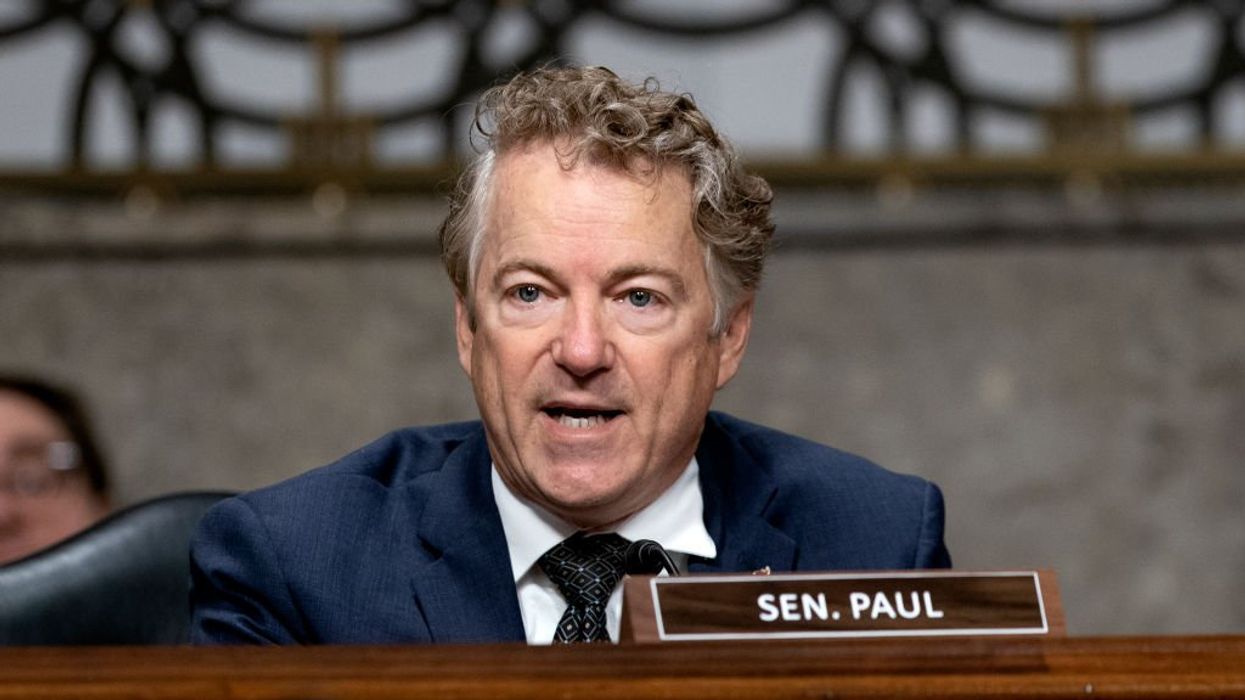
© 2024 Blaze Media LLC. All rights reserved.
Successfully addressing future flow—how many immigrants will be allowed to enter the country in the coming years and how long they can stay—is critical to America’s economic prosperity.
 Senator Lindsey Graham and Senator Charles Schumer, members of the Gang of Eight have been working on immigration reform, including lifting the cap on H-1B visas. (AP file photo)
Senator Lindsey Graham and Senator Charles Schumer, members of the Gang of Eight have been working on immigration reform, including lifting the cap on H-1B visas. (AP file photo)
Immigration reform appears to be imminent, with the Senate’s “Gang of Eight” expected to reveal their bill this week. The public and pundits are likely to focus on how the bill offers a path to legal status and eventual citizenship for people currently living illegally in the country. But this focus misses the more important aspect of the bill: how it deals with future flow.
Successfully addressing future flow—how many immigrants will be allowed to enter the country in the coming years and how long they can stay—is critical to America’s economic prosperity. Immigration policy should prioritize admitting immigrants who make valuable economic contributions.
What determines immigrants’ economic contributions? First and foremost is their contribution to economic growth, which in turn depends on productivity growth. In our high-tech economy, inventors and innovators are the critical source of productivity growth. We need more scientists and engineers, whether American or foreign born. In the short run, immigrants can help fill gaps in our high-tech economy; in the long run, of course, we need the education system to put more emphasis on math and science. Provisions that ensure that foreign-born STEM graduates from US universities are able to stay here if they have a job offer and that businesses are able to bring in enough STEM workers from abroad are therefore a key aspect to look for in the bill.
A second determinant of immigrants’ economic contribution is whether they have skills that employers want and that are in short supply among Americans. The best indicator of whether someone has skills that employers want is whether they can get a job. Here, the least-skilled immigrants are actually doing better than the least-skilled Americans.
Immigrants who do not have a high school diploma are more likely to be working than Americans who have not graduated from high school. These low-skilled immigrants fill an important niche in the labor force, taking dirty, dangerous and dull jobs that few Americans are willing to do, especially when there are myriad welfare programs they can turn to instead.
Current temporary worker programs are costly and cumbersome for employers to use and they severely limit the number of low-skilled workers admitted. Conflicts between business and unions on how to restructure those programs derailed immigration reform in 2007 and almost did so again this year.
The Gang of Eight’s bill is likely to ease admissions somewhat for low-skilled agricultural and non-agricultural workers. But it is unlikely that the bill will incorporate the measures needed to maximize immigration’s economic contribution. Doing so would require allowing a far greater role for market forces—and a smaller role for government agencies.
Market forces are the best way to determine how many and which immigrants employers want to hire. Arbitrary caps set by politicians or bureaucrats cannot respond quickly enough to changes in the economy, nor can they fully incorporate hard-to-measure local economic conditions.
Market forces means allowing employers to bring in the foreign workers they want to hire without arbitrary caps. Ideally, there would be no caps at all, but that is politically infeasible. The next best alternative is to set caps high enough to allow employers ready access to foreign workers. Such caps are far greater than the numbers being leaked about the Gang of Eight bill, more like half a million a year than the twenty thousand or even two hundred thousand low-skilled non-agricultural workers that bill reportedly will allow each year.
But wouldn’t American workers be hurt by essentially unlimited immigration? Not if the bill also contains provisions for worker mobility. The ability to move across employers and industries is crucial to reducing employers’ ability to exploit workers. Worker mobility also helps ease local labor shortages. Current temporary worker programs make it almost impossible for workers to move jobs if they get a better offer elsewhere.
If Congress insists on imposing low caps on admissions of foreign workers, it should auction off the scarce number of visas instead of merely handing them out on a first-come, first-served basis or holding a lottery when the programs are oversubscribed. In our book, Beside the Golden Door, Pia Orrenius and I describe how to design such an auction system and discuss its many economic benefits.
Auctioning off the right to hire foreign workers to the highest bidders would ensure that employers with the greatest willingness to pay would be able to hire workers. It also would ensure that foreign workers are more expensive to hire than Americans. It would generate extra Treasury revenue that is sorely needed. The government already auctions off its debt, the wireless spectrum, offshore oil leases, and pollution permits, among other areas. Why not permission to bring in temporary foreign workers, too?
Related Contributions
Want to leave a tip?
We answer to you. Help keep our content free of advertisers and big tech censorship by leaving a tip today.
Want to join the conversation?
Already a subscriber?
more stories
Sign up for the Blaze newsletter
By signing up, you agree to our Privacy Policy and Terms of Use, and agree to receive content that may sometimes include advertisements. You may opt out at any time.
© 2024 Blaze Media LLC. All rights reserved.
Get the stories that matter most delivered directly to your inbox.
By signing up, you agree to our Privacy Policy and Terms of Use, and agree to receive content that may sometimes include advertisements. You may opt out at any time.


